Traditional Indian Flower Arrangements for Festivals and Celebrations
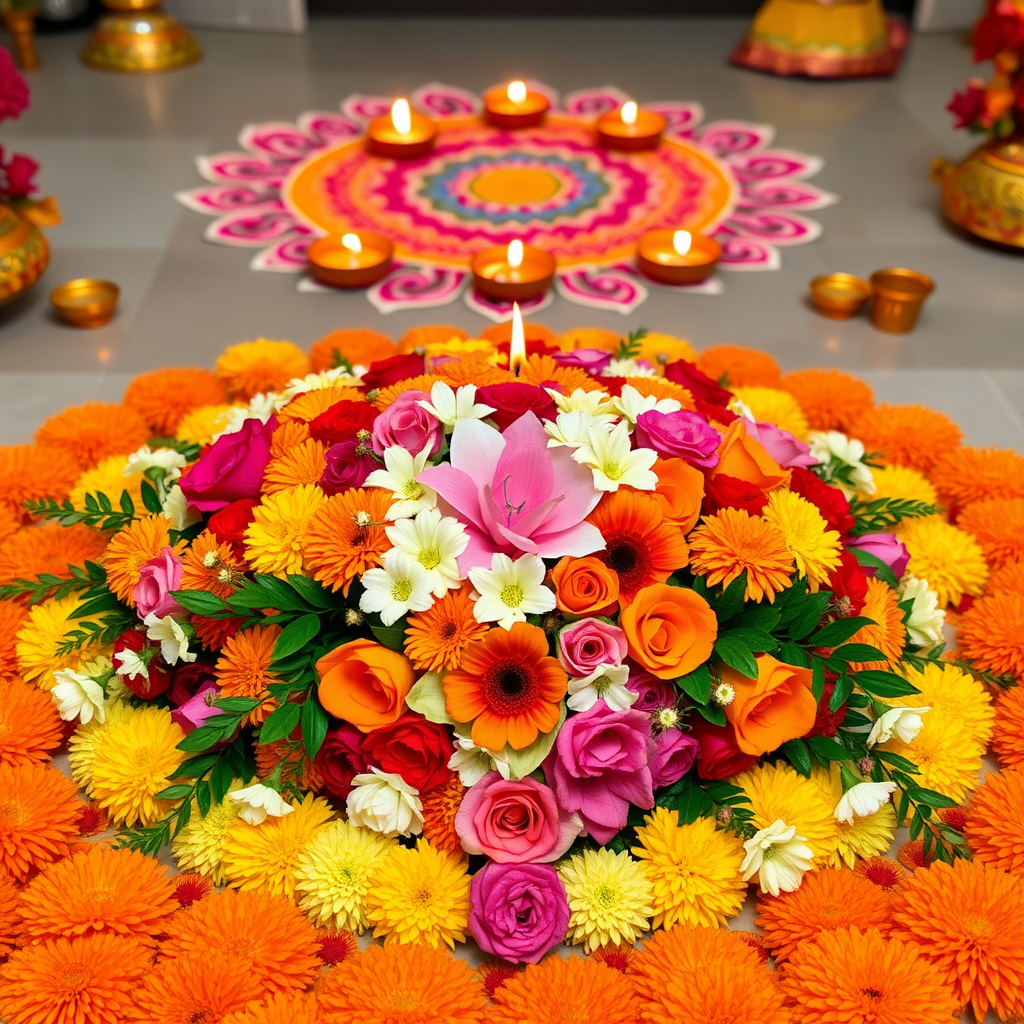
India's rich cultural heritage comes alive through the vibrant art of traditional flower arrangements. From the golden marigolds of Diwali to the delicate jasmine garlands of weddings, these floral decorations have been an integral part of Indian celebrations for centuries.
The Sacred Art of Floral Decoration
Traditional Indian flower arrangements, known as "pushpa vidya" in Sanskrit, represent more than mere decoration. Each bloom carries spiritual significance, with specific flowers chosen for their symbolic meanings and aromatic properties. The practice of creating these arrangements has been passed down through generations, with each region developing its unique styles and techniques.
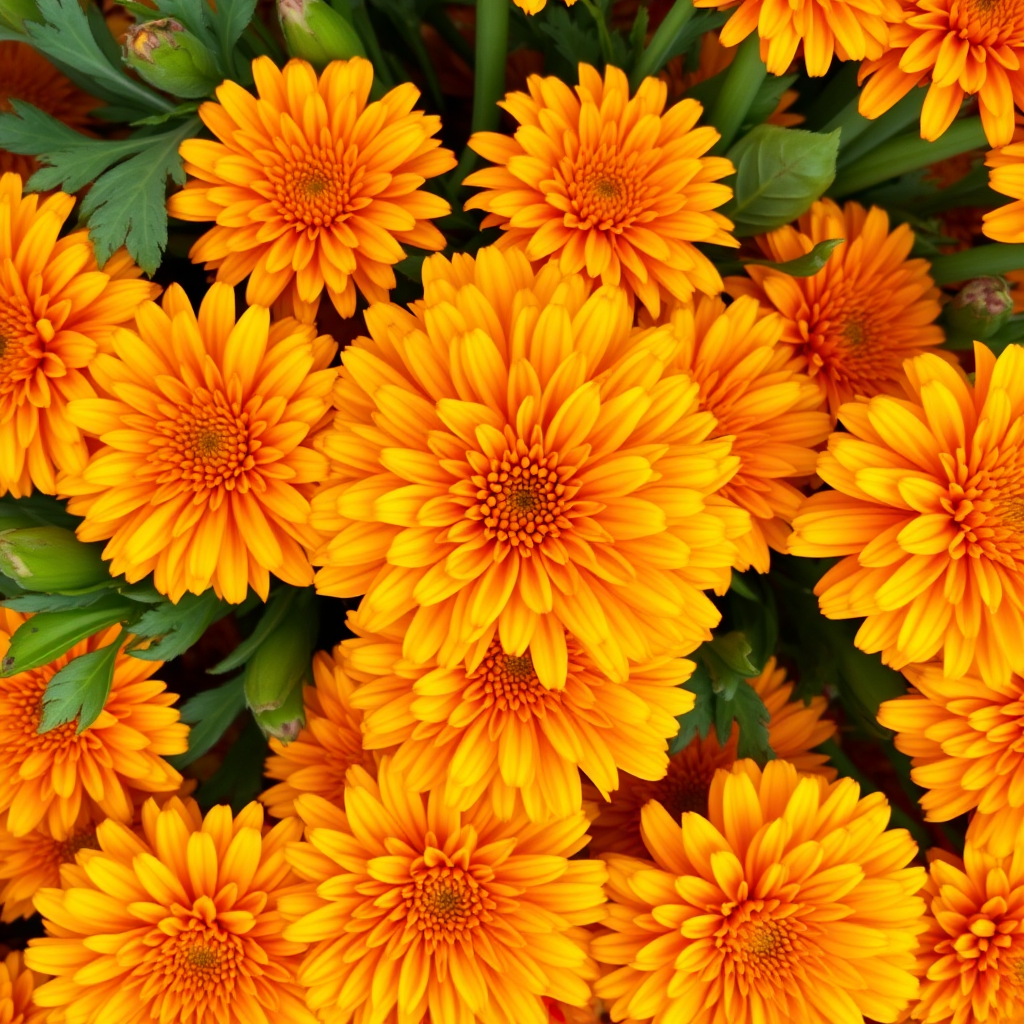
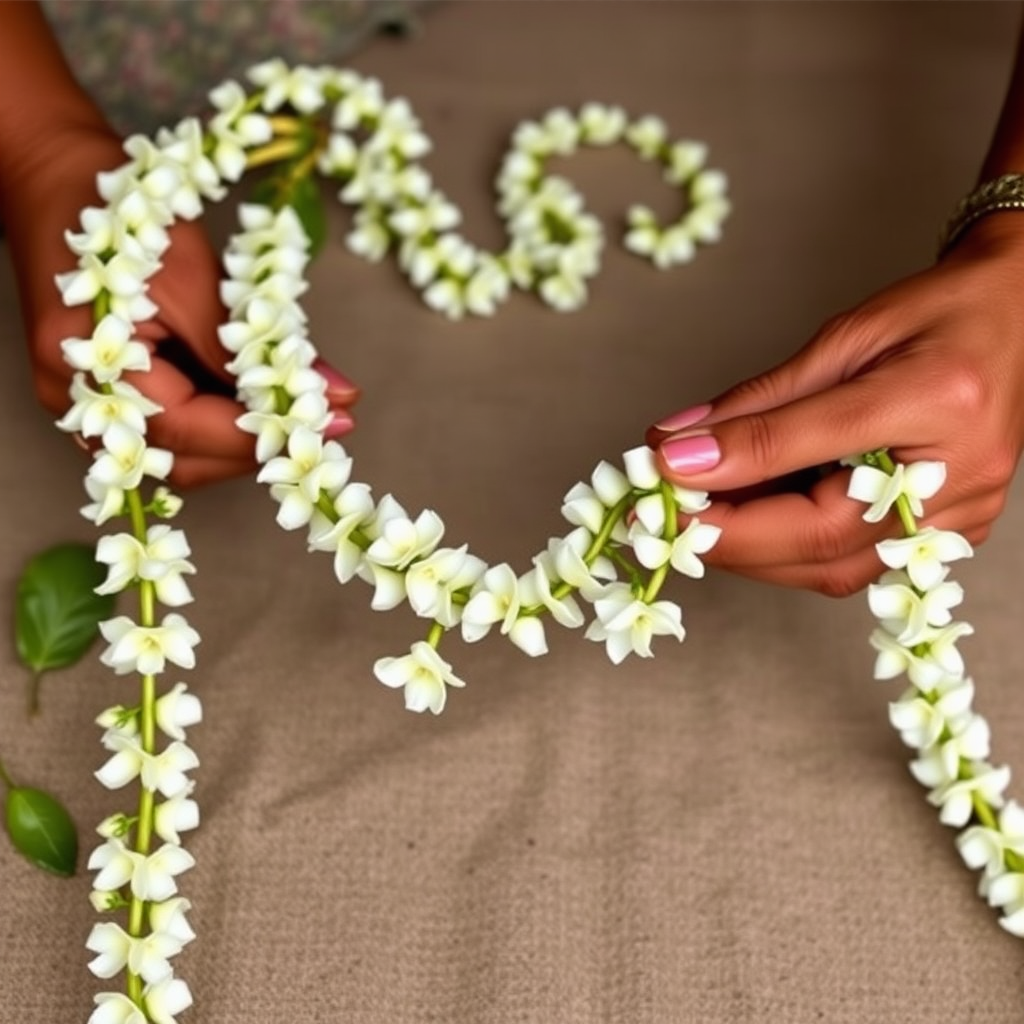
Essential Flowers for Indian Celebrations
Marigolds (Genda)
The golden marigold stands as the most beloved flower in Indian festivities. Its vibrant orange and yellow petals symbolize prosperity and good fortune. During Diwali, marigold garlands adorn doorways, while loose petals create stunning rangoli patterns. The flower's natural pest-repelling properties also make it practical for outdoor celebrations.
Jasmine (Mogra)
Jasmine's intoxicating fragrance and pure white petals make it indispensable for weddings and religious ceremonies. The delicate flowers are traditionally strung into garlands called "gajra" for brides' hair or "haar" for deity worship. The flower represents purity, love, and divine blessing.
Roses (Gulab)
Red and pink roses feature prominently in Indian celebrations, symbolizing love and devotion. Rose petals are scattered during wedding ceremonies and used to create elaborate mandala patterns for temple decorations. The flower's versatility allows for both formal arrangements and casual scattered displays.
Pro Tip from Pankeswap Experts
Always harvest flowers early in the morning when their fragrance is strongest and petals are most resilient. This ensures your arrangements stay fresh throughout the celebration.
Step-by-Step Tutorial: Creating a Diwali Door Garland
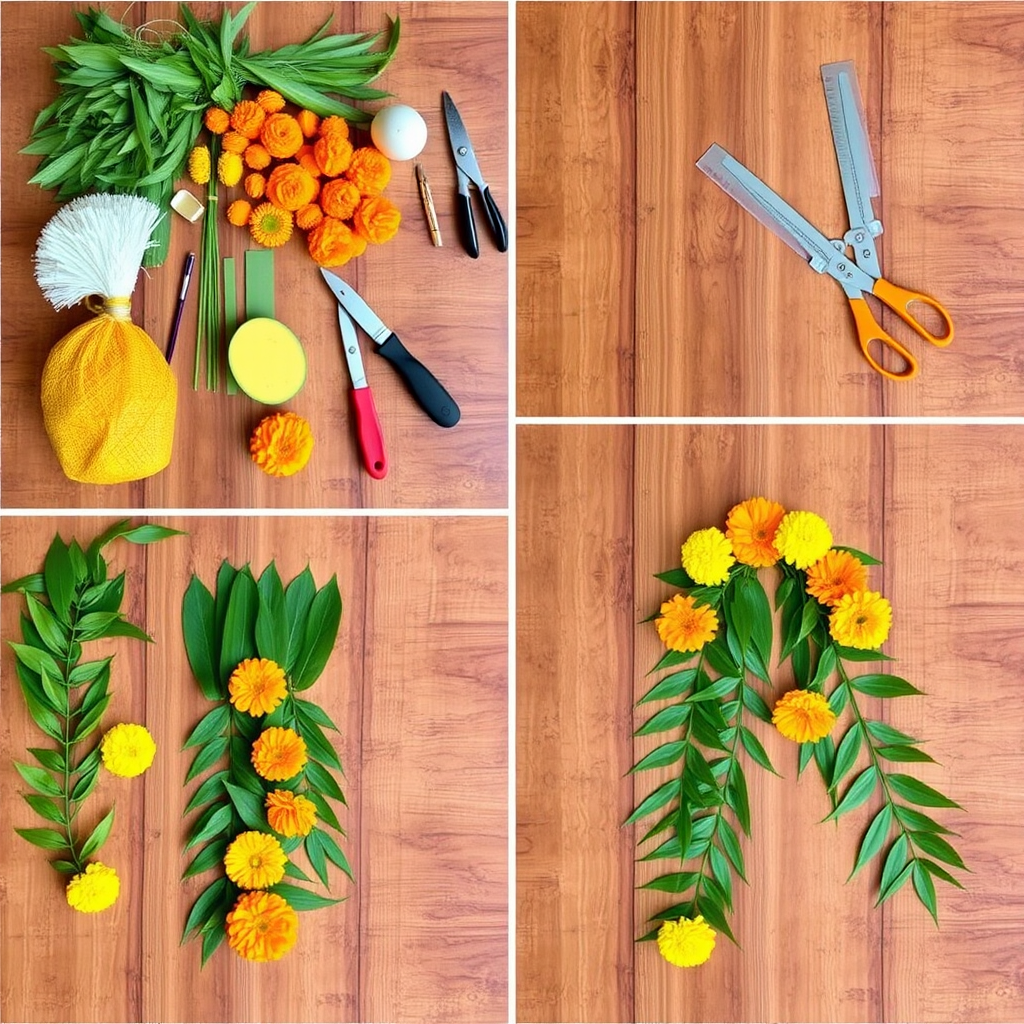
Materials Needed:
- • 50-60 fresh marigold flowers
- • 20-25 mango leaves (optional)
- • Strong cotton thread or thin wire
- • Large needle
- • Scissors
- • Small bowl of water
Instructions:
Step 1: Prepare the Flowers
Remove stems from marigolds, leaving about half an inch. Gently clean any dirt or insects. Keep flowers in water until ready to use to maintain freshness.
Step 2: Thread the Needle
Cut approximately 4 feet of thread and tie a knot at one end. Thread the needle, ensuring the knot is large enough to prevent flowers from sliding off.
Step 3: String the Flowers
Pierce each marigold through the center, pushing it down to the knot. Alternate between different sized flowers for visual interest. Add mango leaves every 8-10 flowers for traditional appeal.
Step 4: Create the Pattern
Traditional patterns include alternating large and small flowers, or creating clusters of three flowers followed by leaves. Maintain consistent spacing for a professional appearance.
Step 5: Finishing Touches
Once desired length is achieved, tie a secure knot and trim excess thread. Gently fluff flowers and adjust positioning. Spray lightly with water to maintain freshness.
Wedding Flower Arrangements
Indian weddings showcase the most elaborate floral displays, with each ceremony requiring specific arrangements. The mandap (wedding canopy) traditionally features cascading jasmine and rose garlands, while the bride's hair is adorned with fresh flower jewelry.
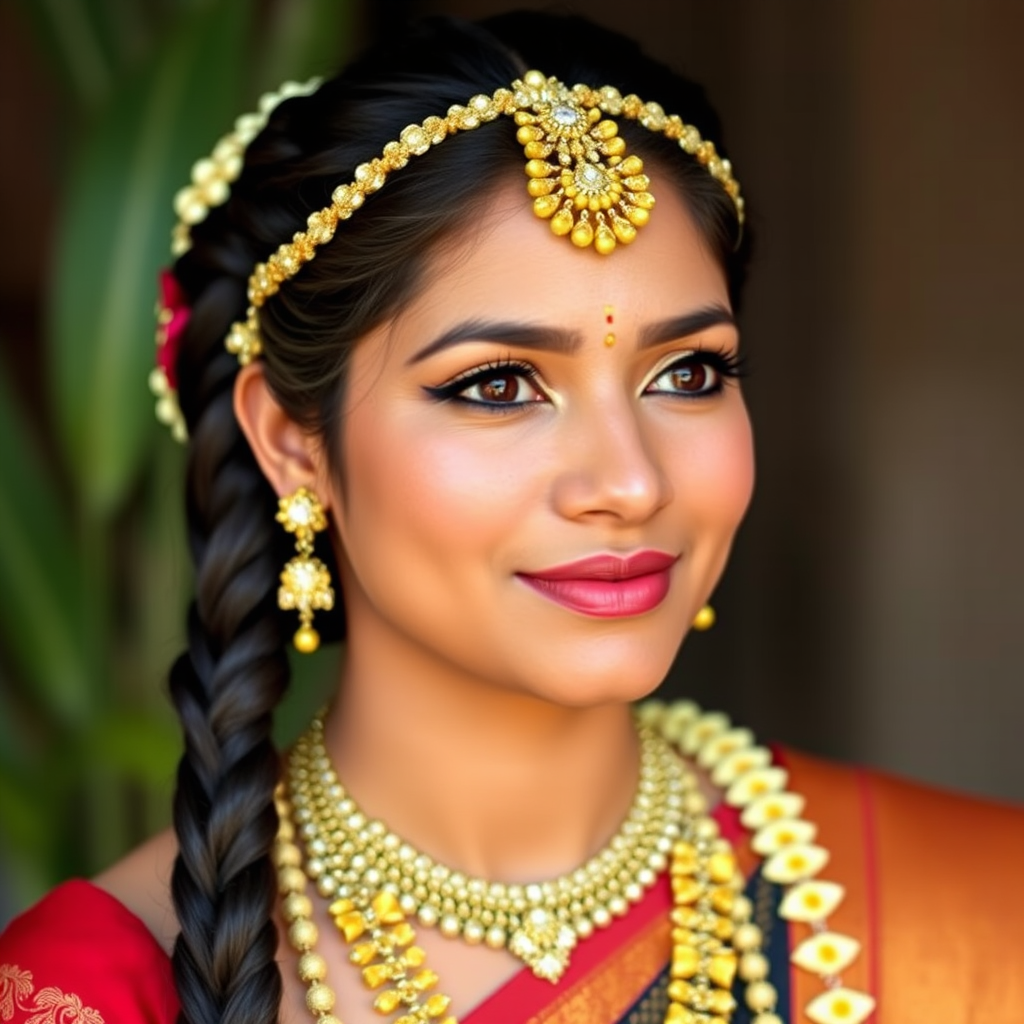
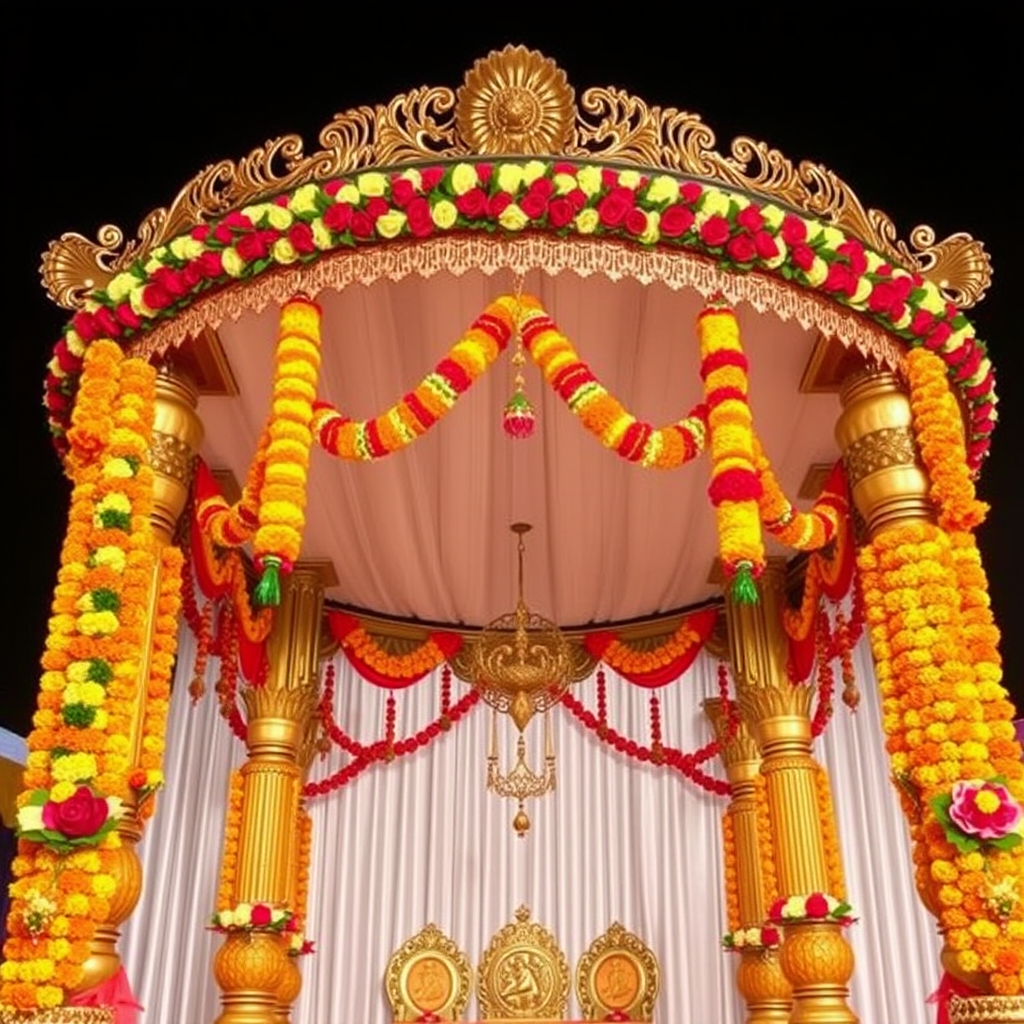

Bridal Hair Flowers (Gajra)
The art of creating bridal hair flowers requires precision and patience. Jasmine buds are carefully selected and strung on thin thread, creating flexible garlands that can be woven through elaborate hairstyles. The process begins at dawn to ensure maximum fragrance retention throughout the wedding day.
Mandap Decorations
The wedding mandap serves as the sacred space for ceremonies, requiring abundant floral decoration. Traditional designs feature four pillars draped with marigold and rose garlands, while the ceiling is adorned with hanging flower clusters. Regional variations include lotus arrangements in Bengali weddings and banana leaf backdrops in South Indian ceremonies.
Regional Variations and Techniques
Each region of India has developed distinct floral arrangement styles reflecting local flowers, cultural preferences, and climatic conditions. Understanding these variations helps create authentic decorations for specific celebrations.
North Indian Style
Northern regions favor bold, vibrant arrangements using marigolds, roses, and chrysanthemums. The style emphasizes abundance and grandeur, with thick garlands and dense flower carpets. Punjabi weddings particularly showcase elaborate floral archways and horse decorations.
South Indian Traditions
Southern states prefer delicate arrangements featuring jasmine, lotus, and temple flowers like champak and parijat. The style emphasizes fragrance and spiritual significance over visual impact. Tamil Nadu's "malai" (garland) tradition creates intricate patterns using small flowers.
Western Coastal Influence
Coastal regions incorporate tropical flowers like frangipani and hibiscus, creating arrangements that withstand humidity. Goan Catholic weddings blend Indian techniques with Portuguese influences, resulting in unique hybrid styles.
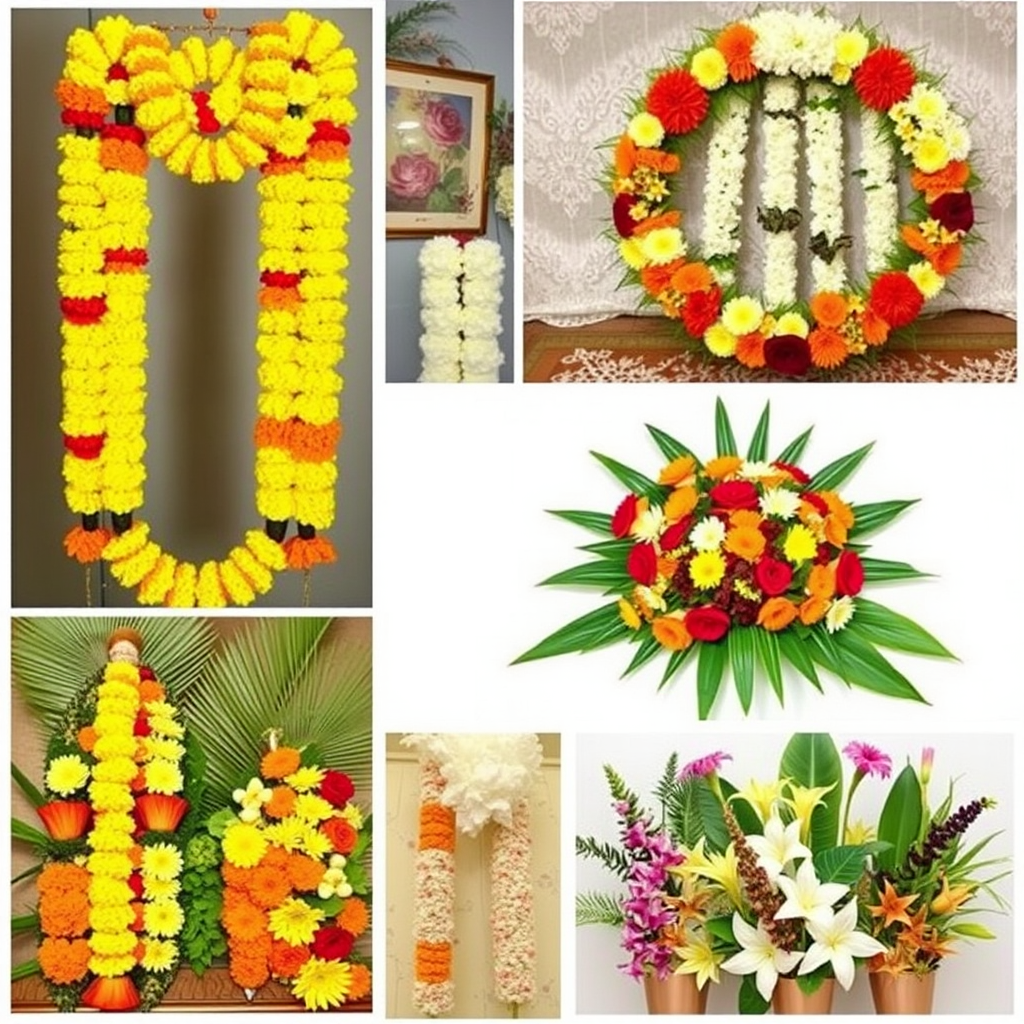
Preservation and Care Tips
Maintaining the freshness and beauty of traditional flower arrangements requires specific techniques passed down through generations of Indian florists and decorators.
Before Arrangement
- • Harvest flowers in early morning
- • Keep stems in cool water immediately
- • Remove damaged petals and leaves
- • Sort by size and color
During Display
- • Mist arrangements regularly
- • Keep away from direct sunlight
- • Maintain cool temperatures when possible
- • Replace wilted flowers promptly
Modern Adaptations of Traditional Techniques
Contemporary Indian celebrations often blend traditional flower arrangement techniques with modern design principles, creating stunning displays that honor heritage while embracing innovation.
Modern florists incorporate traditional Indian flowers into contemporary arrangements, using geometric patterns and minimalist designs while maintaining the spiritual significance of each bloom. These adaptations make traditional techniques accessible to urban celebrations and destination weddings.
Embrace the Beauty of Traditional Indian Floriculture
The art of traditional Indian flower arrangements connects us to centuries of cultural wisdom and spiritual practice. Whether creating simple door garlands for Diwali or elaborate wedding decorations, these techniques transform ordinary celebrations into extraordinary experiences filled with fragrance, color, and meaning. At Pankeswap, we believe that preserving these traditional arts enriches our modern lives with timeless beauty and cultural depth.